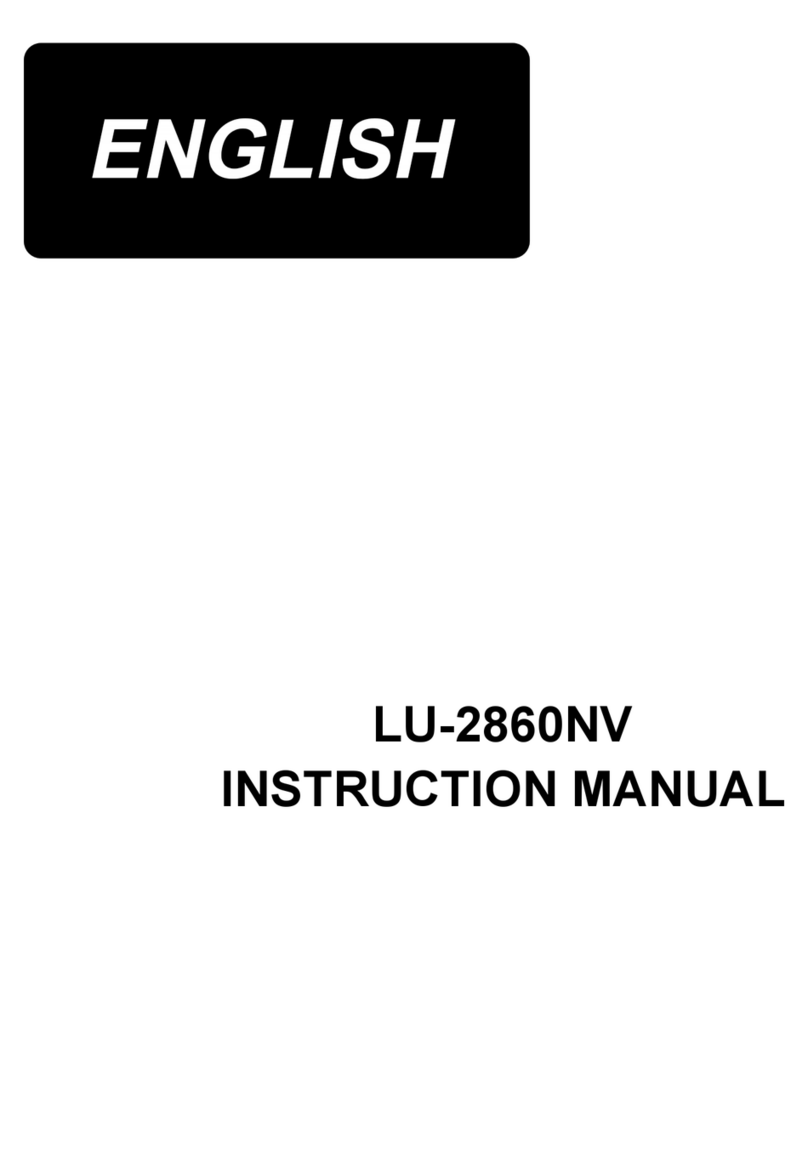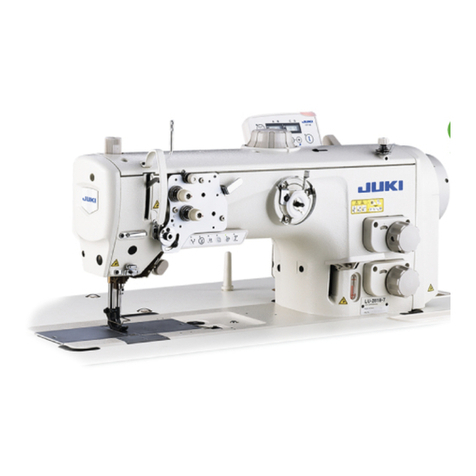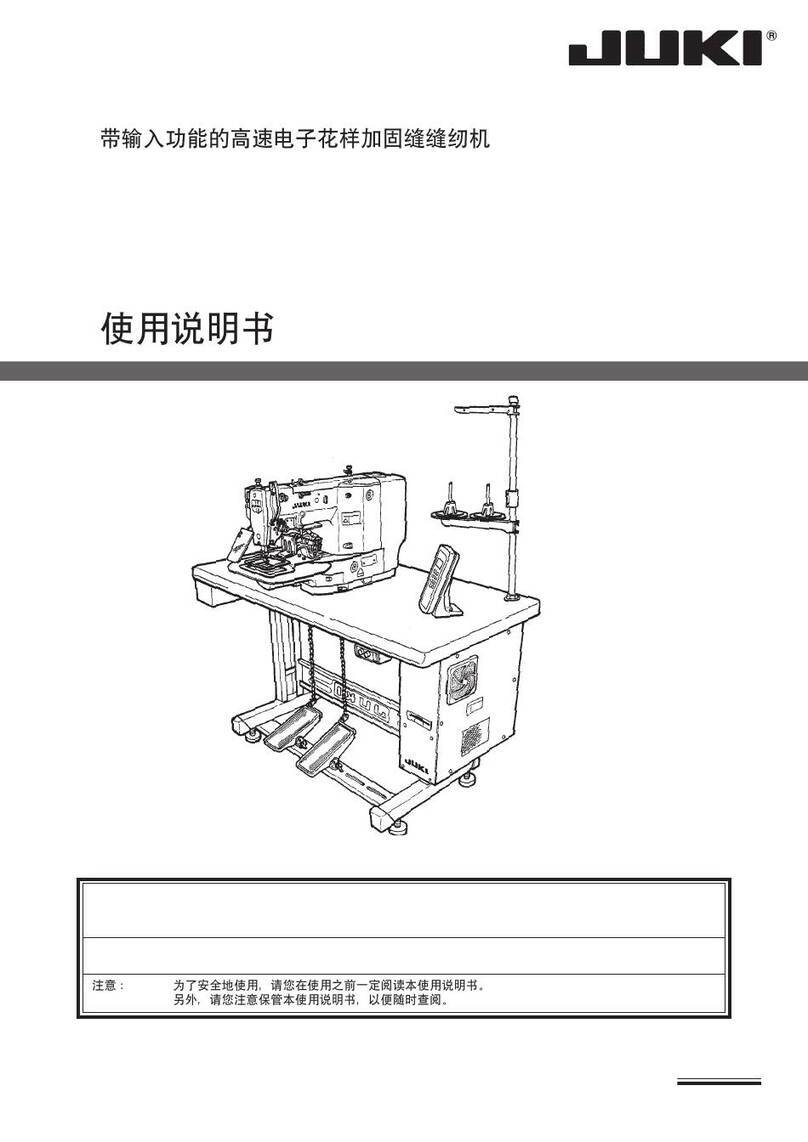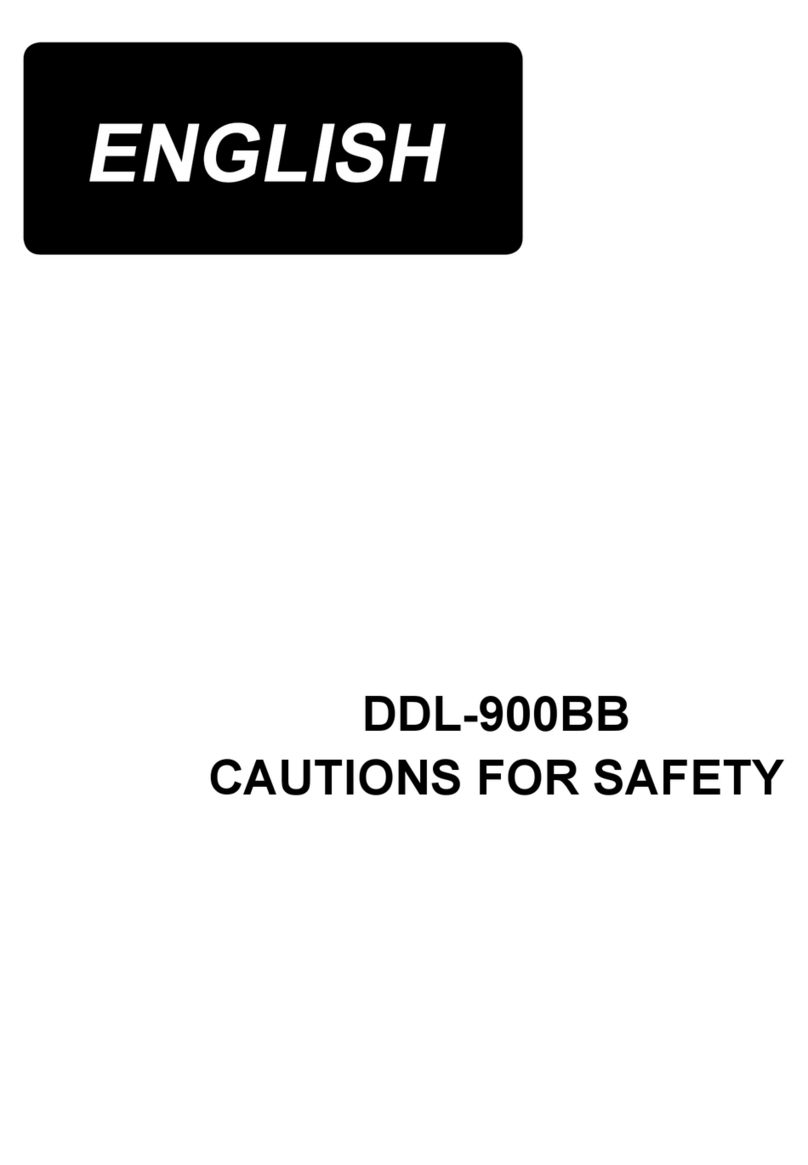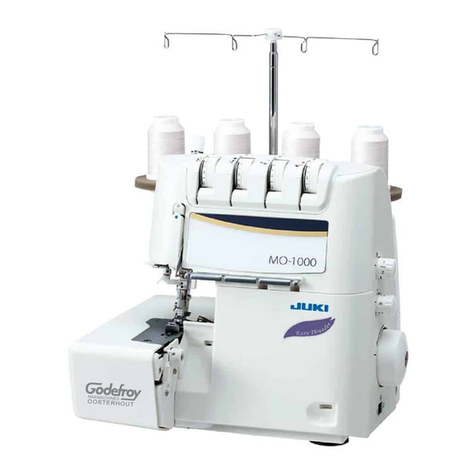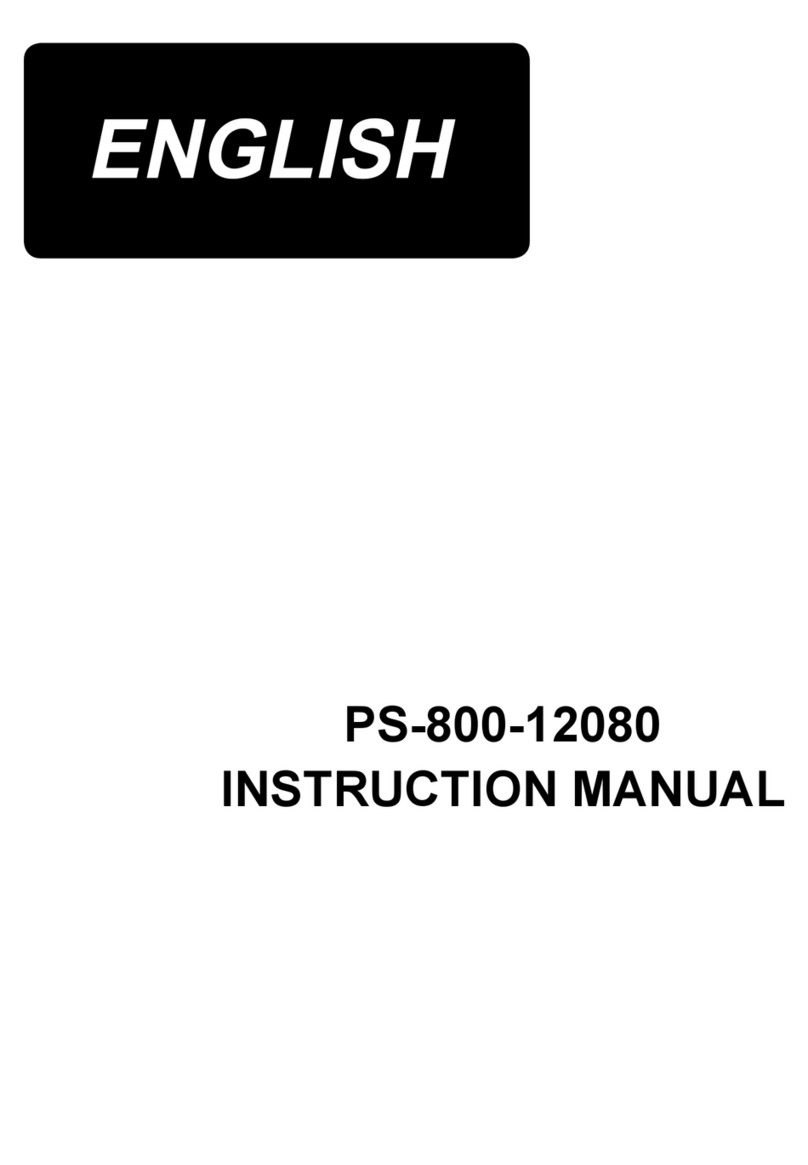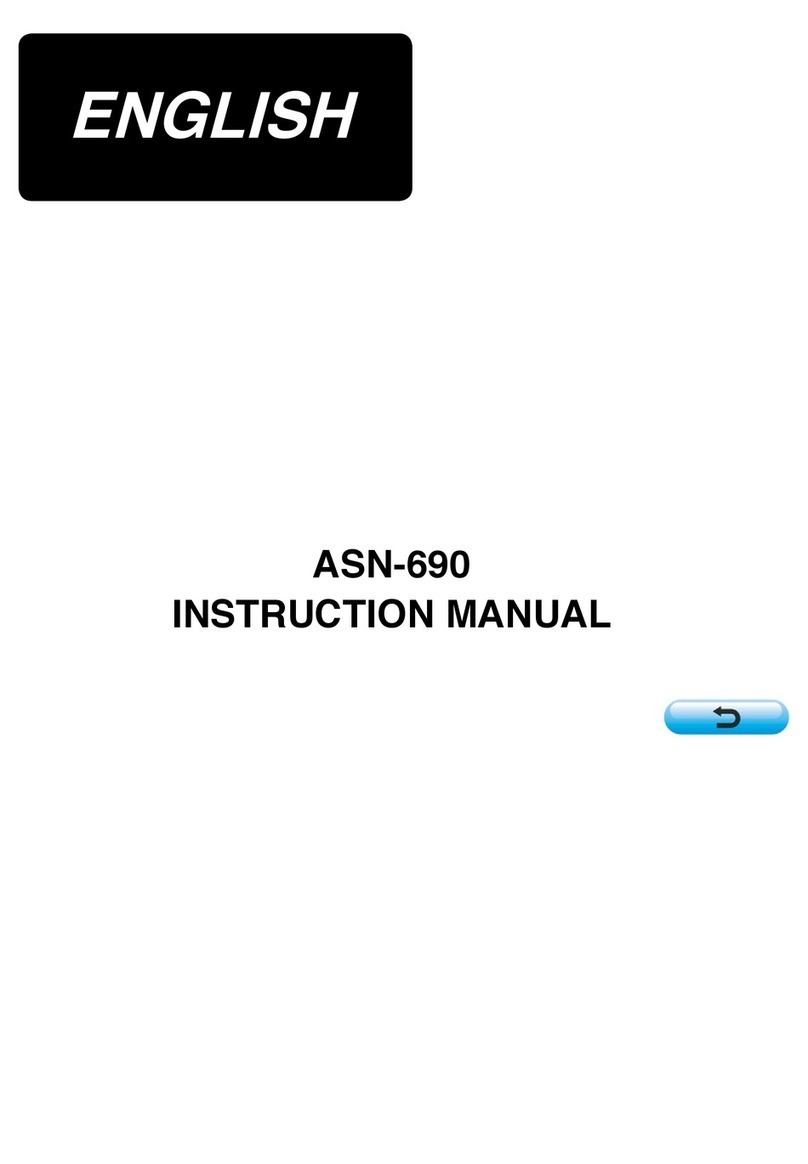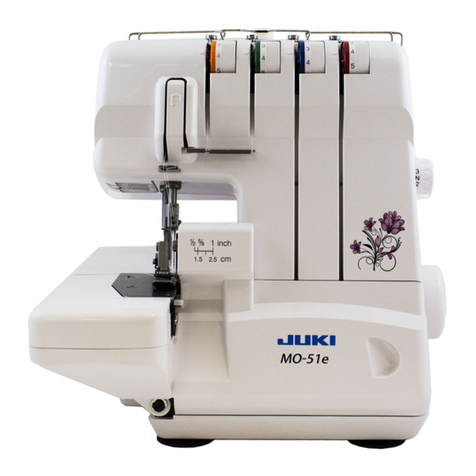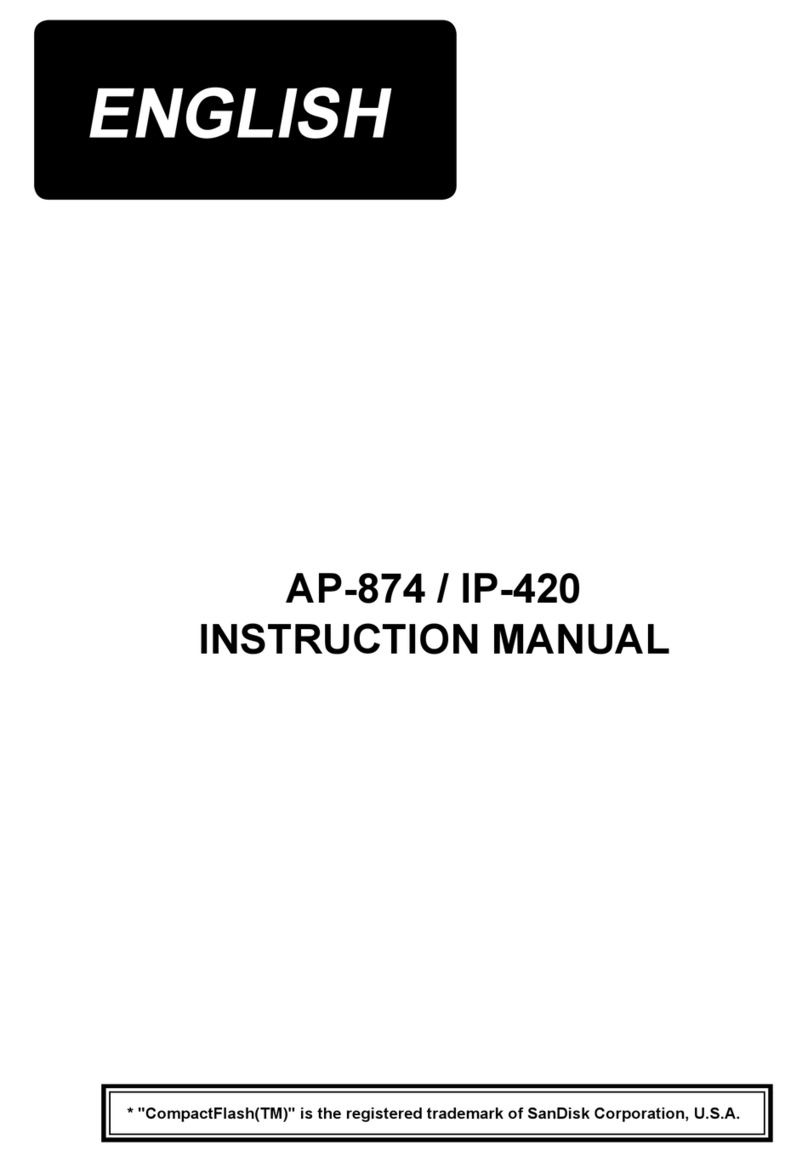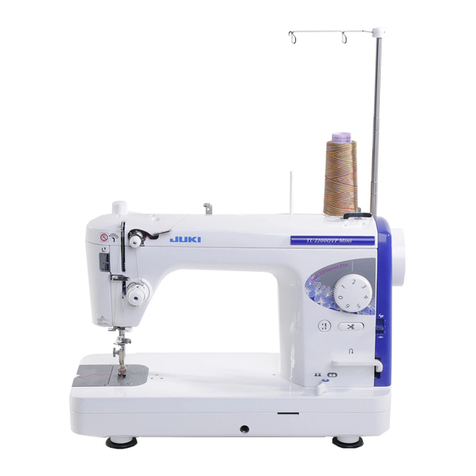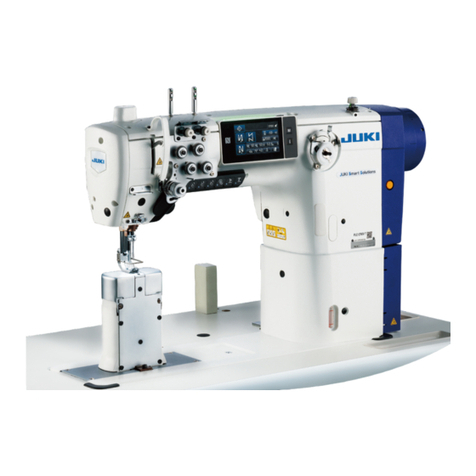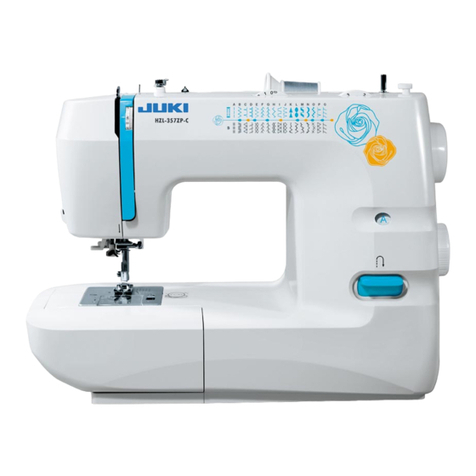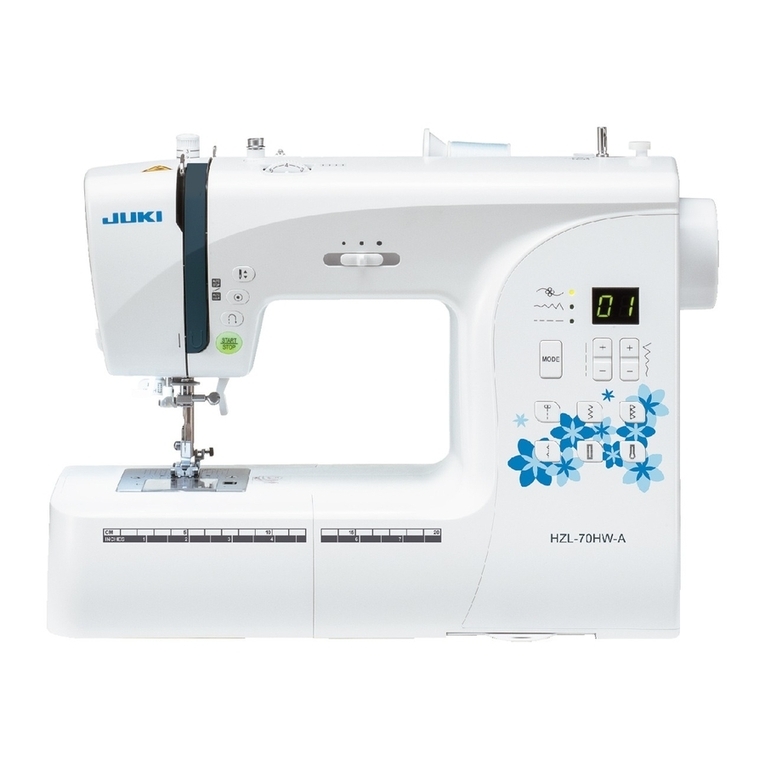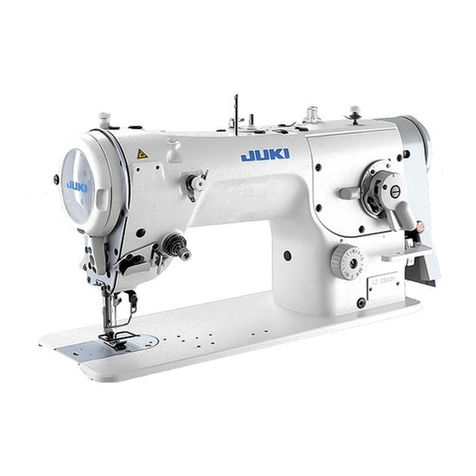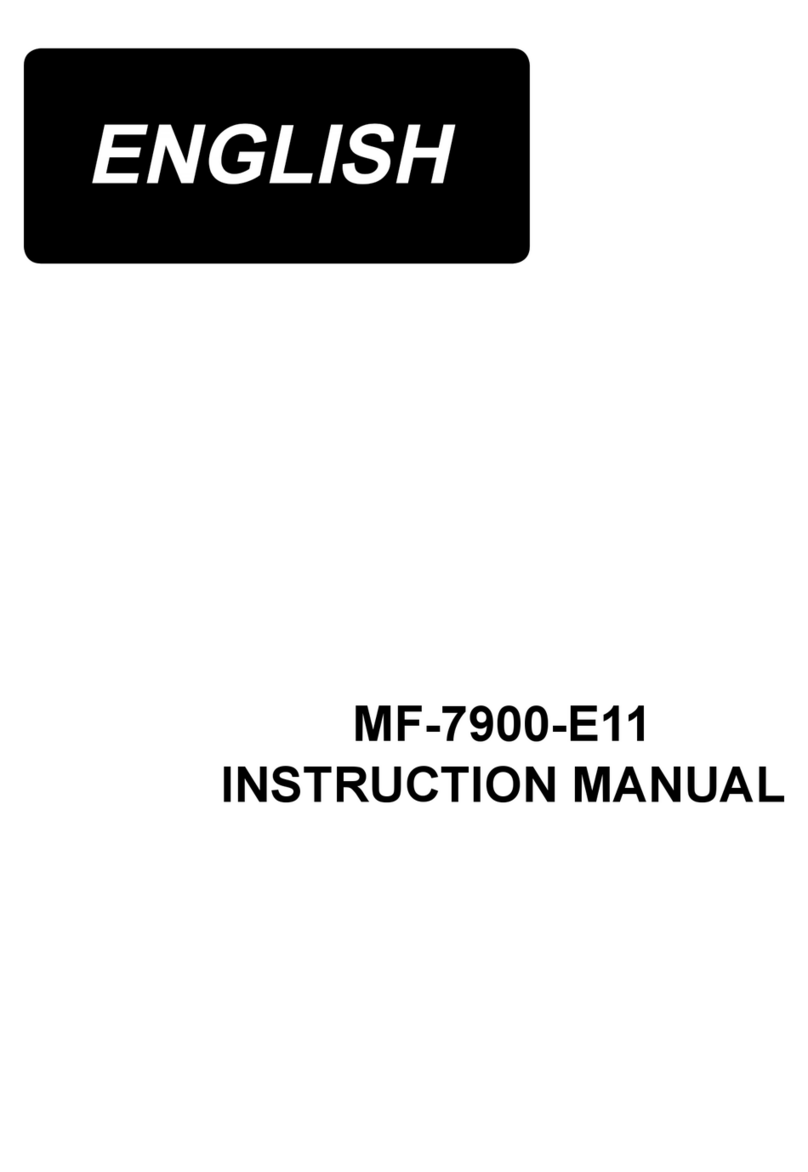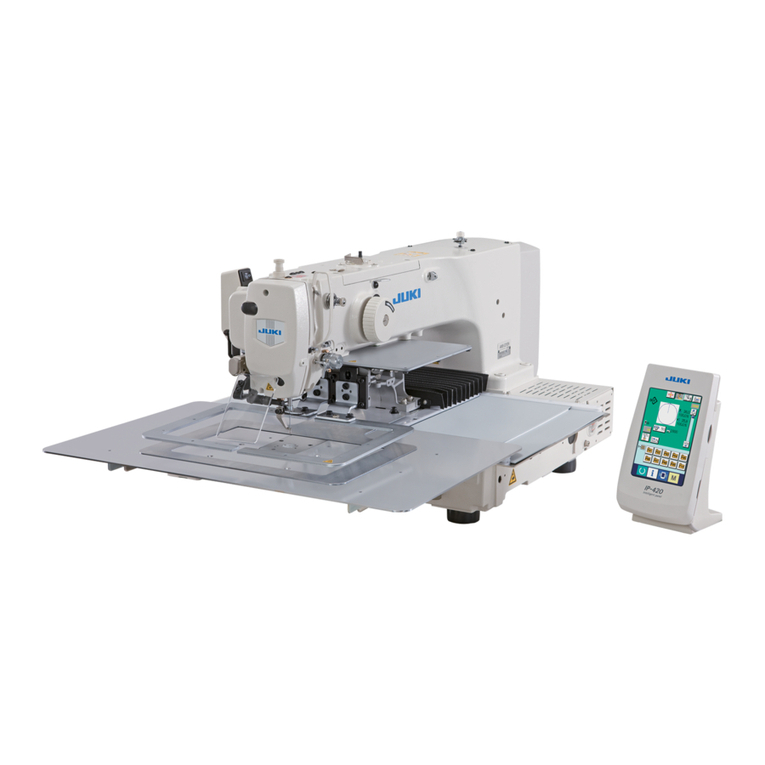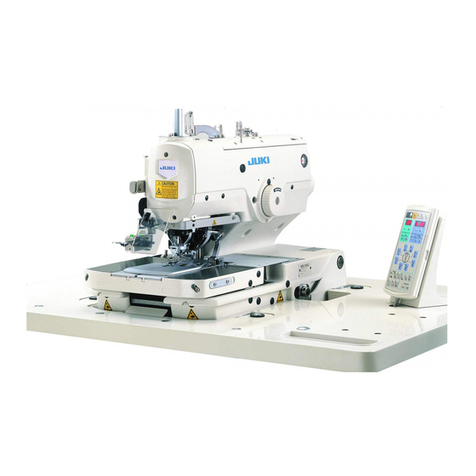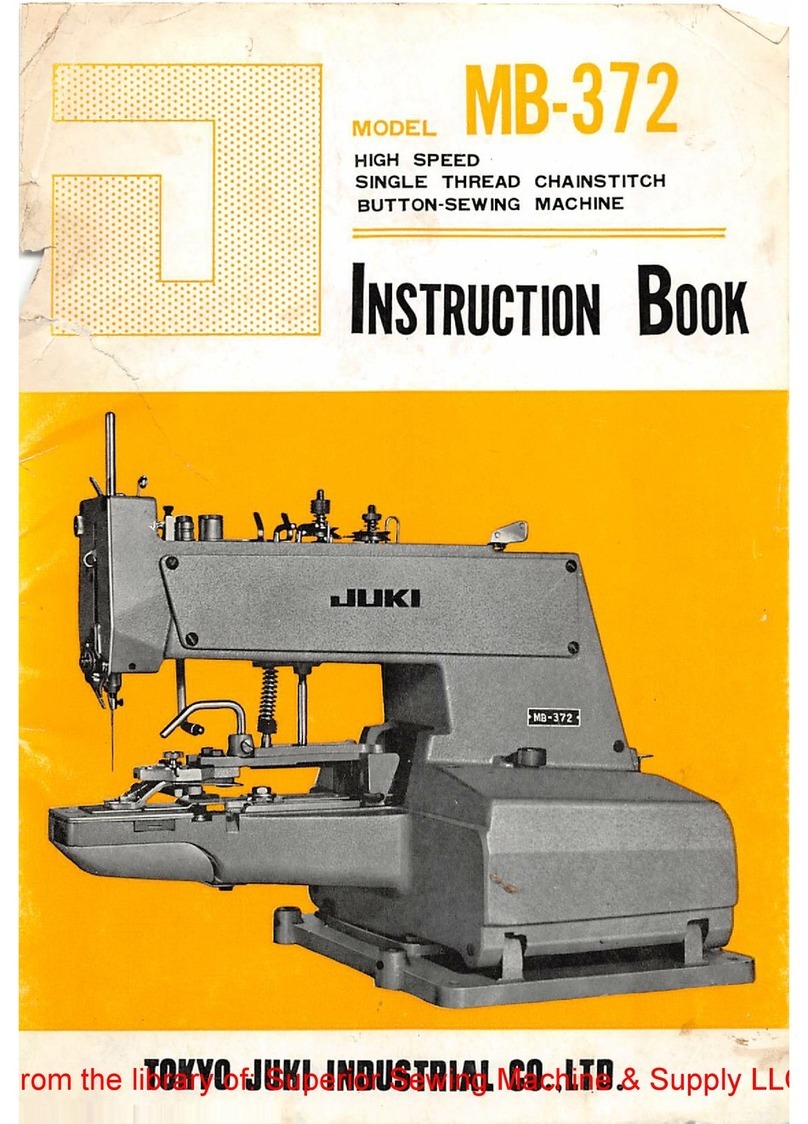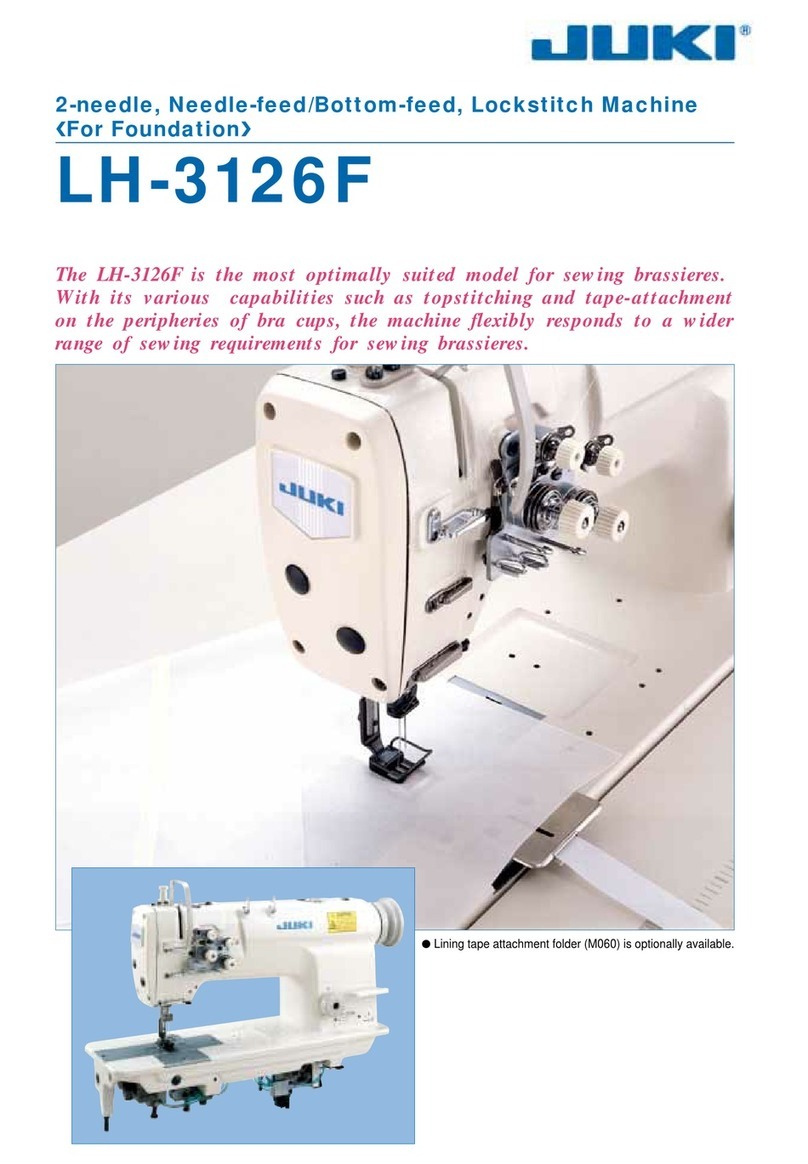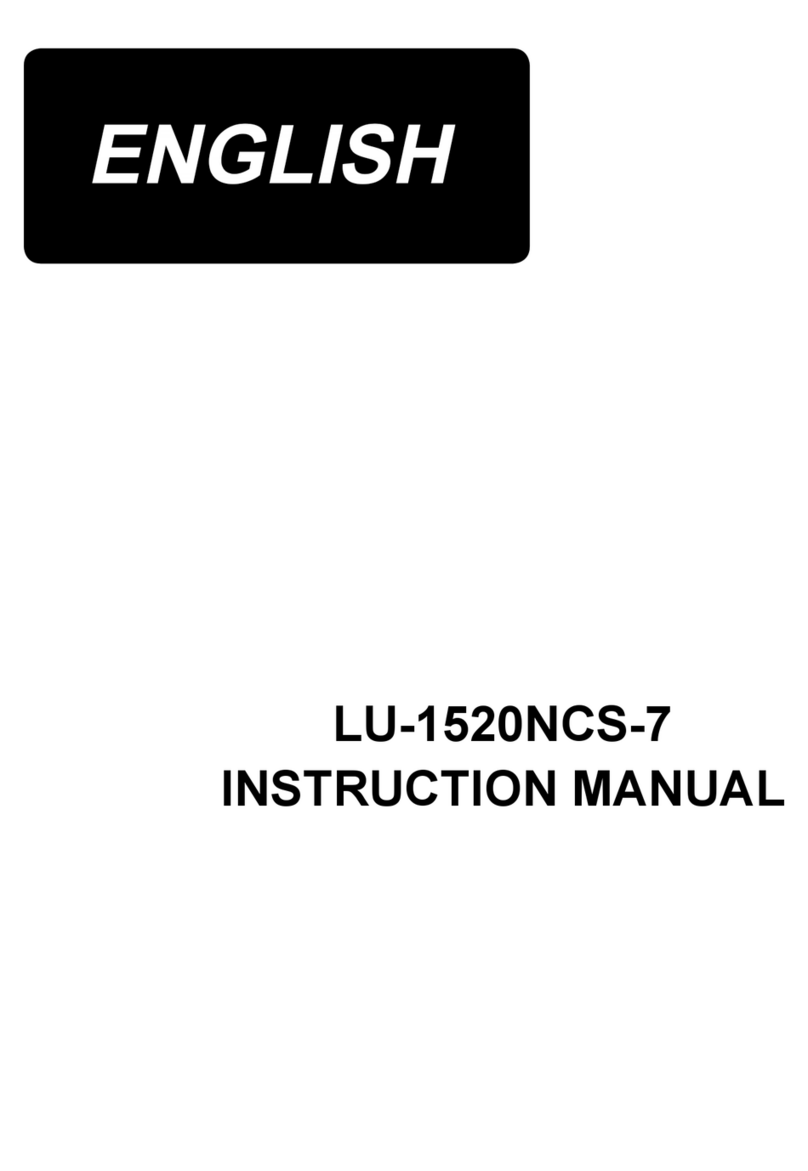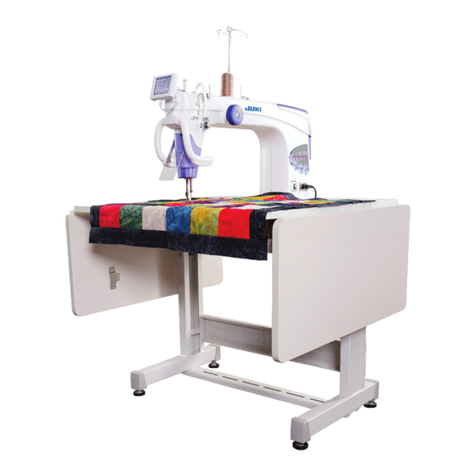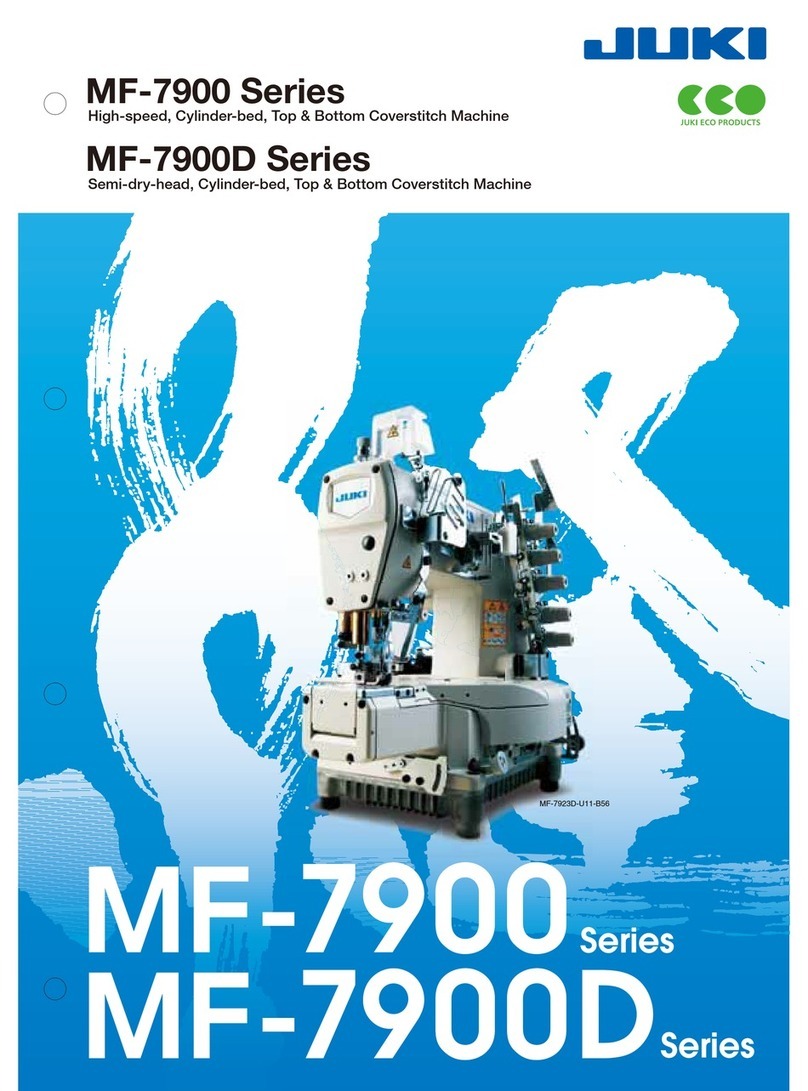CONTENTS
1. SPECIFICATIONS ............................................................................................. 1
2. STANDARD ADJUSTMENT ............................................................................. 2
(1) Height of the needle bar ................................................................................................. 2
(2) Needle-to-hook timing .................................................................................................... 2
(3) Needle rocking timing..................................................................................................... 4
(4) Height of the needle bar rocking rod (adjusting the reference of needle bar
rocking components)...................................................................................................... 4
(5) Adjusting the stitch width PM arm and backlashes of the stitch base line
and stitch width gears ....................................................................................................6
(6) Detecting the origin of the stitch base line stepping motor ....................................... 6
(7) Detecting the origin of the stitch width stepping motor ............................................. 8
(8) Backlash of the feed gear............................................................................................... 8
(9) Longitudinal position of the presser and the feed shaft ........................................... 10
(10) Knife drop position...................................................................................................... 10
(11) Knife bar/position of the knife installing base/knife bar stroke .............................. 12
(12) Knife detector sensor.................................................................................................. 14
(13) Position of the starting safety arm............................................................................. 16
(14) Adjusting the starting safety hook............................................................................. 16
(15) Adjusting the starting sensor..................................................................................... 18
(16) Adjusting the needle thread trimmer control lever .................................................. 20
(17) Adjusting the stop-motion solenoid .......................................................................... 20
(18) Stroke of the stop-motion solenoid ........................................................................... 22
(19) Longitudinal amount of the needle thread trimmer.................................................. 22
(20) Lateral position of the needle thread trimmer .......................................................... 24
(21) Height of the needle thread trimmer.......................................................................... 24
(22) Position of winding the needle thread at the start of sewing.................................. 26
(23) Opening timing of the needle thread trimmer........................................................... 26
(24) Spring pressure of the needle thread trimmer.......................................................... 28
(25) Adjusting the needle thread trimmer lever................................................................ 28
(26) Position of the bobbin thread trimmer/position of bobbin thread clamp plate ..... 30
(27) Timing to open the bobbin thread trimmer and the opening amount / adjusting
the bobbin winder trip latch........................................................................................ 30
(28) Height of the presser................................................................................................... 32
(29) Adjusting the thread tension solenoid ...................................................................... 32
(30) Adjusting the safety switch ........................................................................................ 34
(31) Adjusting the bobbin winder ...................................................................................... 34
(32) Adjusting the thread breakage detecting plate......................................................... 36
(33) Adjusting the presser lifting solenoid ....................................................................... 36
(34) Adjusting the presser lifting air cylinder................................................................... 38
(35) Adjusting the presser fall detecting plate ................................................................. 38
3. DISASSEMBLING/ASSEMBLING PROCEDURE .......................................... 40
(1) Disassembling/assembling the hook driving shaft.................................................... 40
(2) Disassembling/assembling the main shaft ................................................................. 42
(3) Adjusting the timing belt tension................................................................................. 44
